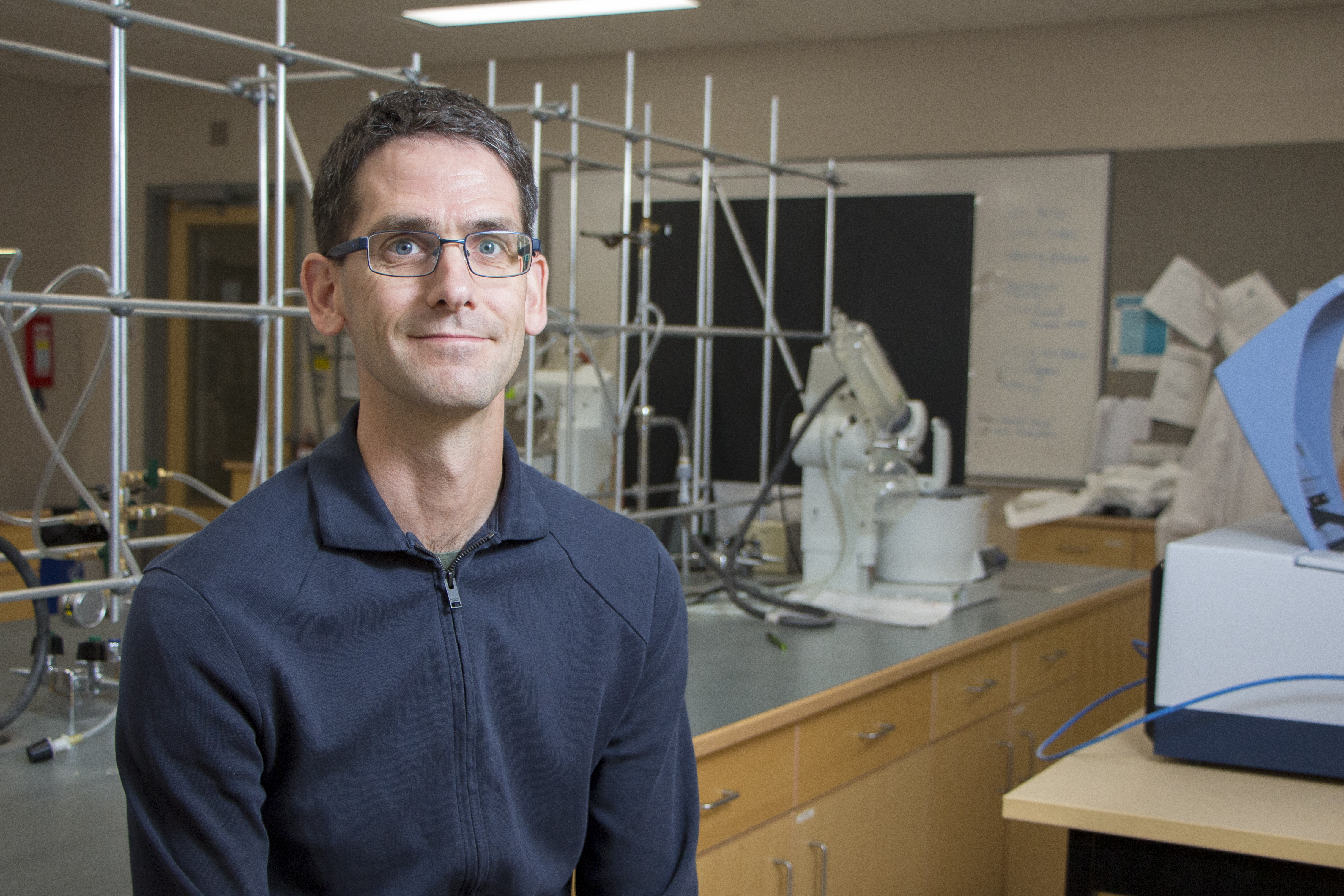
USask researchers awarded nearly $11 M in natural sciences, engineering grants
College of Arts and Science faculty in departments of chemistry, geography and planning among recipients
By USask Research Profile and Impact
University of Saskatchewan (USask) researchers have been awarded nearly $11 million to tackle wide-ranging and critically important issues including cannabis, water quality and swine flu.
The Natural Sciences and Engineering Research Council (NSERC) has awarded $10.6 million in Discovery Grants to 59 USask research projects, and an additional $125,000 to augment support for 10 early career researchers.
“This major federal investment is essential to advance our research discovery and innovation—not just for a safer, cleaner, more prosperous future for Canada, but also to help answer science’s big, fundamental questions,” said USask Vice-President Research Karen Chad.
The results were announced on May 21 in Hamilton, Ont., by Science and Sport Minister Kirsty Duncan.
Discovery Grants support longer-term research endeavors in the natural sciences and engineering to foster research excellence, and provide a stimulating environment for research training.
The following are a few of the projects awarded funding:
Understanding water in forested watersheds—Jeff McDonnell (School of Environment and Sustainability), $570,000
McDonnell’s team will examine how water in forested watersheds—which supply drinking water to half the people of North America and billions worldwide—is stored, mixed and eventually released into streams. The project will help classify different watersheds and create improved models, working towards the United Nations’ sustainable development goal of sustainable forest management.
Predicting changes in the Arctic ecosystem—Steven Siciliano (Soil Science), $375,000 (including $120,000 for a Discovery Accelerator Grant)
USask has the world’s only PET (Positron Emission Tomography) designed for analyzing soil and plants—the BioPETx. Siciliano will use the detector to study plants and soil in the Arctic to learn how minerals, plants and microbes contribute to the Arctic ecosystem. He will use the data to develop a model that predicts how soil will sustain the environment across Canada over the next 50 years.
Protecting pigs from Influenza A—Yan Zhou (VIDO-InterVac), $290,000
The researchers will examine the mechanisms behind inflammation in the lungs of pigs in response to Influenza A infection. The results will eventually contribute to better control of swine influenza in pigs.
Imaging the surface of electrodes for better batteries—Ian Burgess (Chemistry, College of Arts and Science), $240,000
The team will use infrared spectroscopy at the Canadian Light Source synchrotron to better understand electrochemical processes. Much remains a mystery about exactly how electrochemical reactions work at the molecular level. The results will have major implications for efficient energy generation, use and storage in batteries, fuel cells, and the processing and recovery of metals.
Combatting algal blooms to improve water quality—Helen Baulch (School of Environment and Sustainability), $180,000
Baulch will study how nitrogen is cycled in polluted freshwaters. Nutrients, including nitrogen, contribute to widespread problems with water quality, including toxic algal blooms. She will will focus on understanding the extent to which nitrogen is recycled, affecting both water quality and our efforts to improve water quality.
Improving transit service quality and planning—Ehab Diab (Geography and Planning, College of Arts and Science), $155,000
The project will focus on developing a new model that integrates information about ridership, transit service quality and transit users’ level of satisfaction and preferences in Saskatoon and in Canada. The goal is to help authorities efficiently plan and make better investments in order to grow transit market share and predict future demand.
Preventing pregnancy loss in horses—Claire Card (Large Animal Clinical Sciences, Western College of Veterinary Medicine), $140,000
By examining hormone levels at various stages during early pregnancy in horses, researchers will gain a better understanding of how a mare’s reproductive system adapts to being pregnant, and develop new therapies to prevent early pregnancy loss. Early pregnancy loss in horses affects more than 10 per cent of pregnancies and causes substantial economic loss.
Cannabis: how does it affect sleep and appetite? —Robert Laprairie (Pharmacy and Nutrition), $175,750
Researchers will examine the brains and behaviour of mice treated with cannabinoids (the active ingredients in cannabis) to better understand how these drugs work alongside the neurotransmitter orexin to regulate wakefulness and appetite. The research will lead to a greater understanding of the potential values and harms of cannabis, and to improved cannabis marketing policies.
How common pollutants affect aquatic ecosystems—Markus Brinkmann (School of Environment and Sustainability), $140,000
Researchers will study how environmental conditions affect how rainbow trout absorb a family of chemicals commonly found in municipal wastewater. The research will help assess the risks to aquatic ecosystems posed by ionizable organic chemicals, common to more than half of all industrial chemicals and approximately 85 per cent of pharmaceuticals.
Using agricultural wastes to suck-up water pollutants and better produce biofuels and fuel gases—Catherine Niu (Chemical and Biological Engineering), $140,000
Using agricultural wastes, such as canola straw, oat hulls and flax shives, Niu will develop new “biosorption” technologies to clean common, yet stubborn, pharmaceutical pollutants from the environment and improve the efficiency of producing biofuels and fuel gases. This research will focus on the anti-seizure drug carbamazepine, one of the most commonly detected pharmaceutical pollutants in water bodies, which cannot be effectively removed by currently available technology, and on the purification of biobutanol, natural gas and other fuel gases to increase efficiency and reduce costs.
Four USask researchers have also been awarded a total of $319,000 through the NSERC Research Tools and Instruments (RTI) grants. The grants foster and enhance the discovery, innovation and training capability of university researchers by supporting the purchase of research equipment.
Among the recipients are:
Daniel Chen (Mechanical Engineering) will use the $150,000 award to purchase an advanced 3D printer to create novel tissue scaffolds. These novel structures will be used to grow artificial tissues that one day may help repair injured cartilage and bones, hearts damaged by heart attacks, and treat strokes and teeth. Chen’s co-applicants are Dr. Donald Bergstrom (PhD), Dr. Brian Eames (PhD), Dr. Ali Honaramooz (PhD) and Dr. Jerzy Szupnar (PhD).
Emily McWalter (Mechanical Engineering) was awarded $138,500 to purchase state-of the-art equipment that will help her and co-applicants James Johnston (Mechanical Engineering) and Saija Kontulainen (Kinesiology) study how forces are transmitted through joints, such as the knee or wrist. The goal is to understand how bone diseases, such as osteoporosis and osteoarthritis, progress.
The other grant recipients are Timothy Kelly (Chemistry) and Matthew Paige (Chemistry), who were awarded $10,900 and $ 19,400 respectively, for repairing equipment that will be used for chemistry research.


